 Copyright 2010 by Sania Hedengren and Susanna Zacke
Copyright 2010 by Sania Hedengren and Susanna Zacke
English Translation Copyright 2014 by Skyhorse Publishing First published in 2010 as Betong en gjuten hobby by Sania Hedengren and Susanna Zacke, Bokfrlaget Semic, Sundbyberg, Sweden Photography by Anna Skoog
Graphic design by Marianne Lillir All Rights Reserved. No part of this book may be reproduced in any manner without the express written consent of the publisher, except in the case of brief excerpts in critical reviews or articles. All inquiries should be addressed to Skyhorse Publishing, 307 West 36th Street, 11th Floor, New York, NY 10018. Skyhorse Publishing books may be purchased in bulk at special discounts for sales promotion, corporate gifts, fund-raising, or educational purposes. Special editions can also be created to specifications. For details, contact the Special Sales Department, Skyhorse Publishing, 307 West 36th Street, 11th Floor, New York, NY 10018 or info@skyhorsepublishing.com.
Skyhorse and Skyhorse Publishing are registered trademarks of Skyhorse Publishing, Inc., a Delaware corporation. www.skyhorsepublishing.com 10 9 8 7 6 5 4 3 2 1 eISBN: 978-1-62873-903-9 Library of Congress Cataloging-in-Publication Data Hedengren, Sania. [Betong en gjuten hobby. English] Concrete crafts : simple projects from jewelry to place settings, birdbaths to umbrella stands / Sania Hedengren & Susanna Zacke photography Anna Skoog ; translated by Anette Cantagallo. pages cm First published in 2010 as Betong en gjuten hobby by Sania Hedengren and Susanna Zacke, Bokforlaget Semic, Sundbyberg, Sweden. ISBN 978-1-62636-544-5 1.
Handicraft. 2. House furnishings. 3. Garden ornaments and furnitureDesign and construction. Concrete. I. I.
Zacke, Susanna. II. Title. TT910.H4313 2014 745.5dc23 2013033321 Printed in China  Contents
Contents 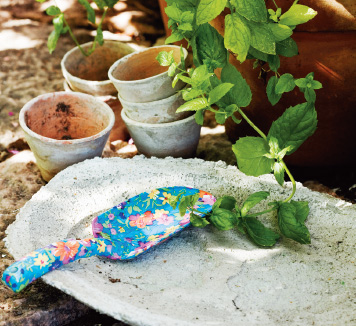 Concrete: An Awesome Material! Its finally done: Concrete Crafts, the book we thought was missing from the shelves. We want to share our ideas about concrete and the joys of crafting with it. Casting your own creations isnt difficult, and you can make your own professional-looking concrete decorations and furniture in as little as one day.
Concrete: An Awesome Material! Its finally done: Concrete Crafts, the book we thought was missing from the shelves. We want to share our ideas about concrete and the joys of crafting with it. Casting your own creations isnt difficult, and you can make your own professional-looking concrete decorations and furniture in as little as one day.
Mix fine concrete with water and pour into molds of various shapes. Once its dried, remove the concrete from the mold, and youre done! Our experience has taught us that once youve started and finished your first small projectwhich can be as simple as pouring concrete into an old plastic container and dropping in a tea lightthe ideas will start flowing. Concrete is such a versatile, awesome material that its difficult to stop once youve started! The key is to find sturdy, interesting, and whimsical molds to cast in. These can be common plastic bowls, barrels, buckets, or old plastic containers. For example, a toilet brush holder molds a perfect candy bowl; a plastic bottle cut in half makes an adorable candleholder; and crocheted fabric creates beautiful patterns on bowls. The list goes on....
In this book you will find some thirty projects, and while we tried to divide these projects into themes, the versatile nature of concrete means that these projects cant always be put into categories. They are all, however, fun, stylish, practical, and decorative. These items have hundreds of uses, both indoors and out! We hope youll appreciate the wide variety of ideas as you turn from one page (which might explain how to cast a barbecue stand) to the next (which can show how to cast small decorative birds in ice cube trays...). Learn, be inspired, and then head out to get a bag of concrete and a few buckets and molds, and start creating. GOOD LUCK! Sania and Susanna Good to Know WHAT IS CONCRETE? Concrete consists of 80 percent ballast rock, which is comprised of sand, stone, and gravel. Fourteen percent is cement, which consists of heated and ground limestone, and 6 percent is water.
Concrete is therefore a natural material that is eco-friendly, useful, and long lasting. Concrete is also one of the worlds most important building materials, and it has a long history in the construction industry. There are very old structures, such as amphitheaters, bridges, and houses, that are made of concrete, and they have stood for thousands of years. The fine concrete that weve used for the projects in this book will be relatively smooth because its made of tiny stones, about an eighth of an inch in size. If you want it to be even smoother, you can use a concrete mix used in repairs; you can find all kinds of concrete at your local home improvement store. Buckets, sandbox toys, plastic bowls, tubs, bottles, and old packaging are all examples of good, inexpensive molds that you can use to make pots, birdbaths, candle-holders, and more.
MOLDS The shape you cast in is the most important part of the process, as its the part that delivers the results. Its here that you have to use your imagination. Plastic is a good material because its elastic and has a smooth surface that wont stick to the concrete. However, many other materials, such as heavy cardboard, wood, and metal, also work just fine. Remember to brush the inside of the mold with vegetable oil to loosen the concrete from the sides.  For tabletops, benches, and shelves, youll need to build your own shape using particle board and form-works.
For tabletops, benches, and shelves, youll need to build your own shape using particle board and form-works.
You can also look around at flea markets and thrift stores for inexpensive options and whimsical shapes. It can even be as simple as using ice cube trays from Ikea. Sometimes in order to remove the set concrete, youll have to cut the mold, so it makes sense to use an old plastic container that would have gone to waste anyway. REINFORCEMENT Reinforcing the concrete is necessary when you cast larger pieces. For example, a tabletop must be strengthened to keep it from breaking. The reinforcement also makes the concrete more resistant to frost.
To reinforce concrete, use rebar, reinforcement mesh, hardware cloth, or chicken wire. We use chicken wire for our projects, because the wire is soft and can be easily cut with a pair of pliers. To use chicken wire as reinforcement, trim a piece of wire to fit the mold. Push the wire down into the wet concrete, and cover with a little more concrete to keep the mesh in place. Its not nearly as complicated as it may sound. 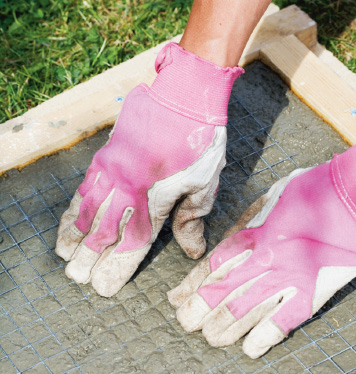 DECORATION To give the concrete that extra touch, you can decorate it with a variety of different things.
DECORATION To give the concrete that extra touch, you can decorate it with a variety of different things.  DECORATION To give the concrete that extra touch, you can decorate it with a variety of different things.
DECORATION To give the concrete that extra touch, you can decorate it with a variety of different things.
A pot, for example, can be decorated with mosaic pieces that you press down into the wet concrete. If you want your mosaic to have an irregular pattern, you can break old chipped porcelain and freely mix the different patterns and colors. People often sell their old crockery at garage sales, and you can usually get it quite cheap. You can also buy odd, single tiles or cheap mosaic pieces from a tile store. Natural materials, such as beautiful stones or sea-shells, also add a nice decorative touch. A variation on this theme is to cast the decoration itself.
Next page
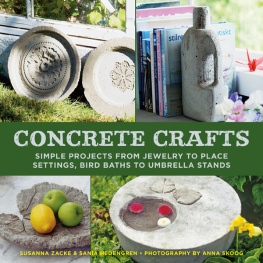
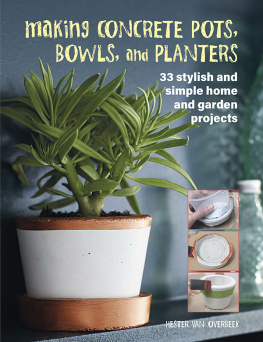

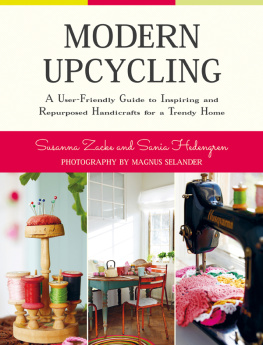
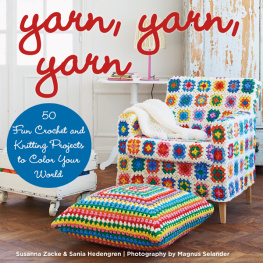
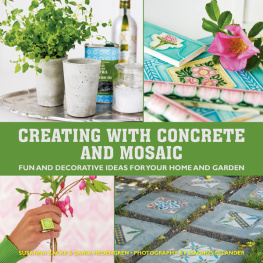
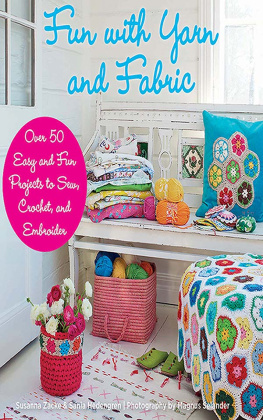
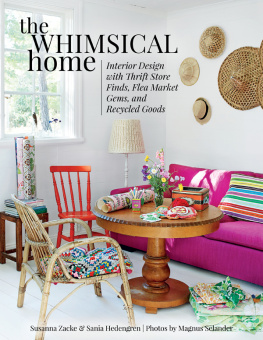
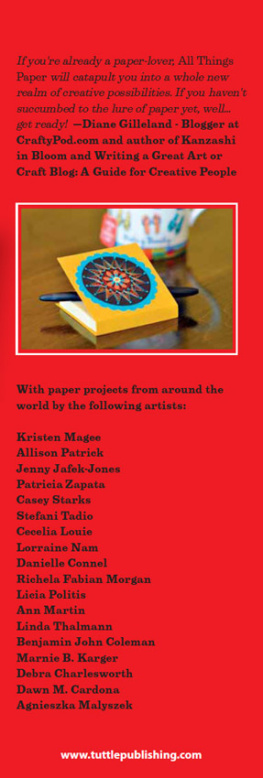
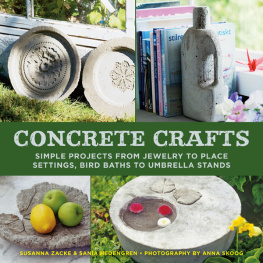

 Copyright 2010 by Sania Hedengren and Susanna Zacke
Copyright 2010 by Sania Hedengren and Susanna Zacke Contents
Contents  Concrete: An Awesome Material! Its finally done: Concrete Crafts, the book we thought was missing from the shelves. We want to share our ideas about concrete and the joys of crafting with it. Casting your own creations isnt difficult, and you can make your own professional-looking concrete decorations and furniture in as little as one day.
Concrete: An Awesome Material! Its finally done: Concrete Crafts, the book we thought was missing from the shelves. We want to share our ideas about concrete and the joys of crafting with it. Casting your own creations isnt difficult, and you can make your own professional-looking concrete decorations and furniture in as little as one day. For tabletops, benches, and shelves, youll need to build your own shape using particle board and form-works.
For tabletops, benches, and shelves, youll need to build your own shape using particle board and form-works. DECORATION To give the concrete that extra touch, you can decorate it with a variety of different things.
DECORATION To give the concrete that extra touch, you can decorate it with a variety of different things.